

Sign up for updates delivered directly to your inbox.
Employee performance management is not a walk in the park, and there are many evaluation methods and tools to choose from. If you want to choose the right type of assessment for your specific business goals, you need to know the pros and cons of each performance review process.
In this article, we’ll give you all the information you need on these methods, along with details on their pros and cons for your company! As a bonus, you’ll find evaluation questions and evaluation examples you can use as inspiration.
Employees are evaluated according to a checklist of predetermined key performance indicators and strengths and weaknesses such as time management skills. Supervisors determine whether the evaluated employee’s performance meets these criteria and provide structured goals. Most of the time, these employee appraisals take place annually and workers are rated on a linear scale.
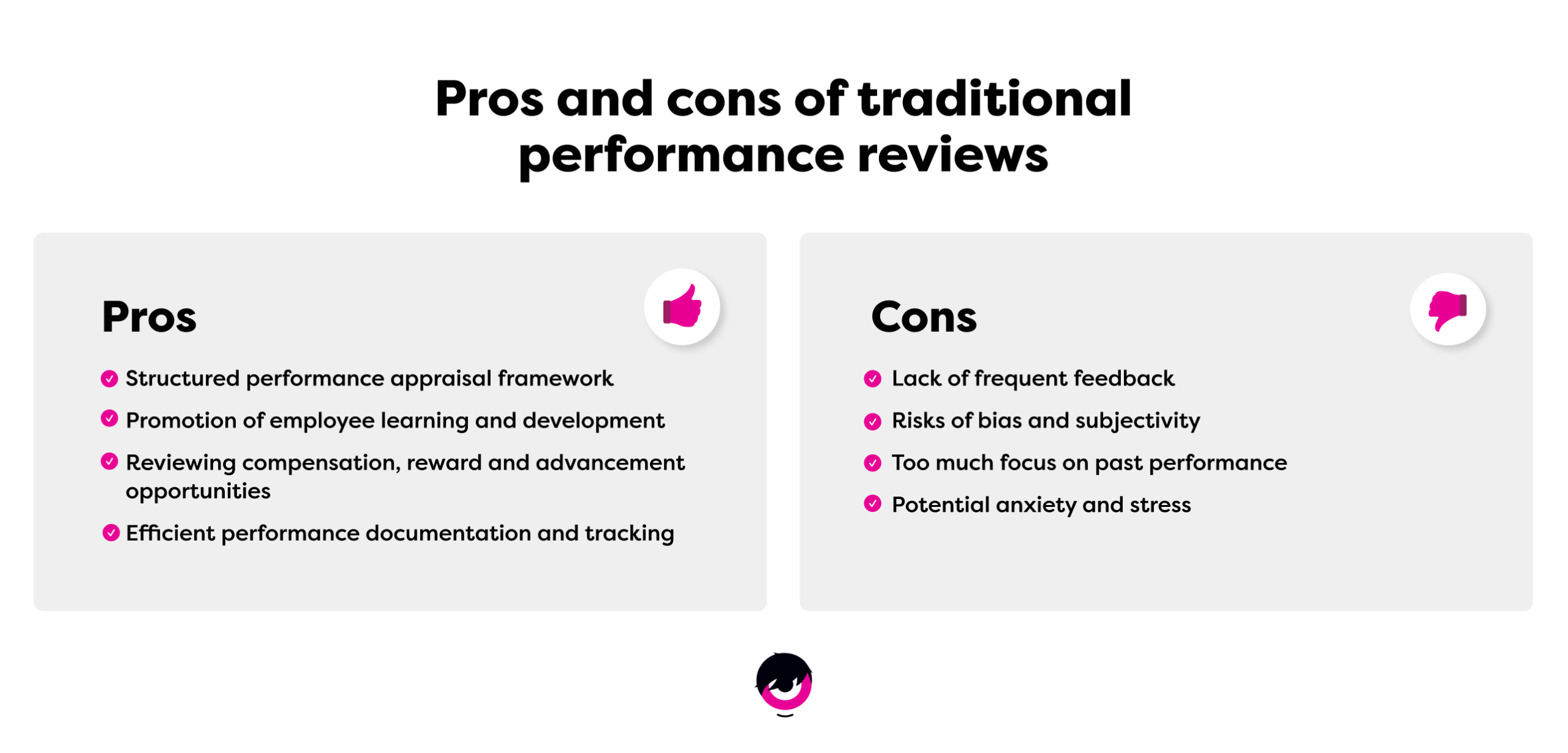
The manufacturing industry, warehouses and retail companies can get great results from traditional employee appraisal systems. Indeed, these evaluations often focus on quantitative evaluation criteria that fit with repetitive tasks.
360-degree feedback consists of multi-rater feedback collected about an employee from their peers, their managers, and themselves. Obtaining constructive feedback coming from different perspectives helps gather comprehensive insights on employee performance strategies in the workplace.
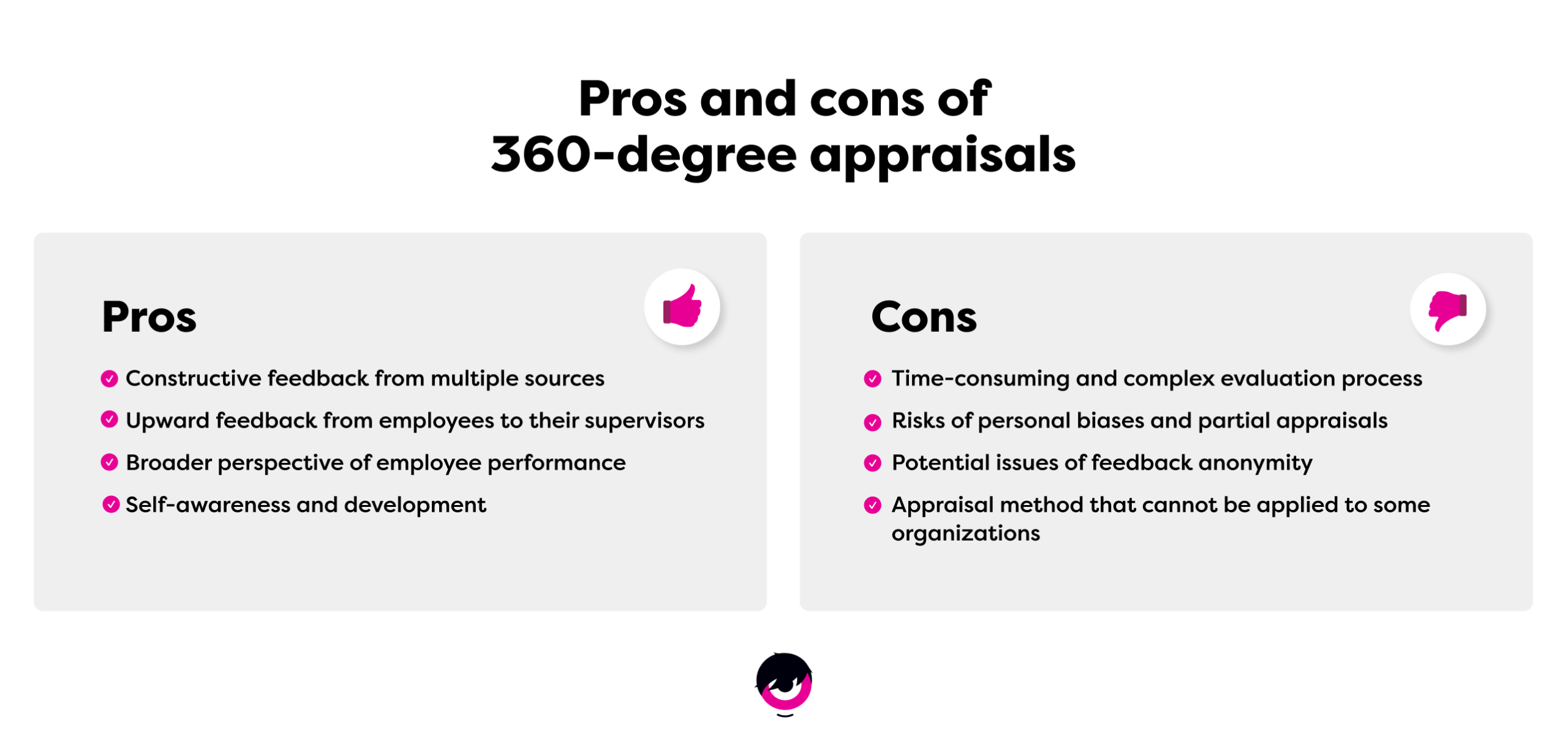
All companies can use 360-degree feedback – it more so depends on the job category. Managers can particularly benefit from this process and it can be adjusted depending on the industry (companies that provide services can use client feedback for the evaluation). The downside is that this method can be quite costly and time consuming depending on your business reality.
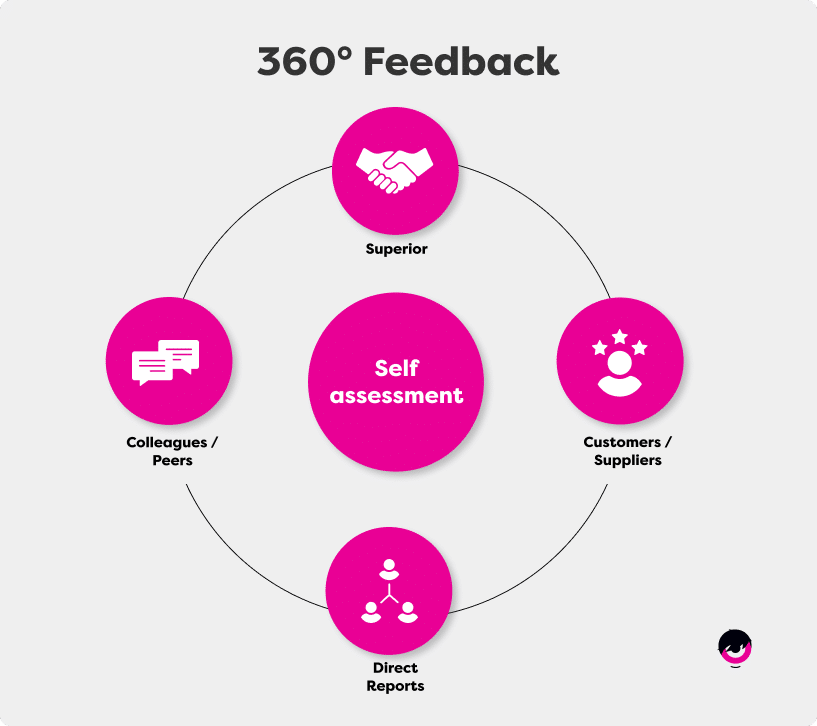
This method defines clear and concrete goals that the employee and the organization aim to achieve. These objectives may be quantitative or qualitative, and tracking them often requires regular performance meetings.
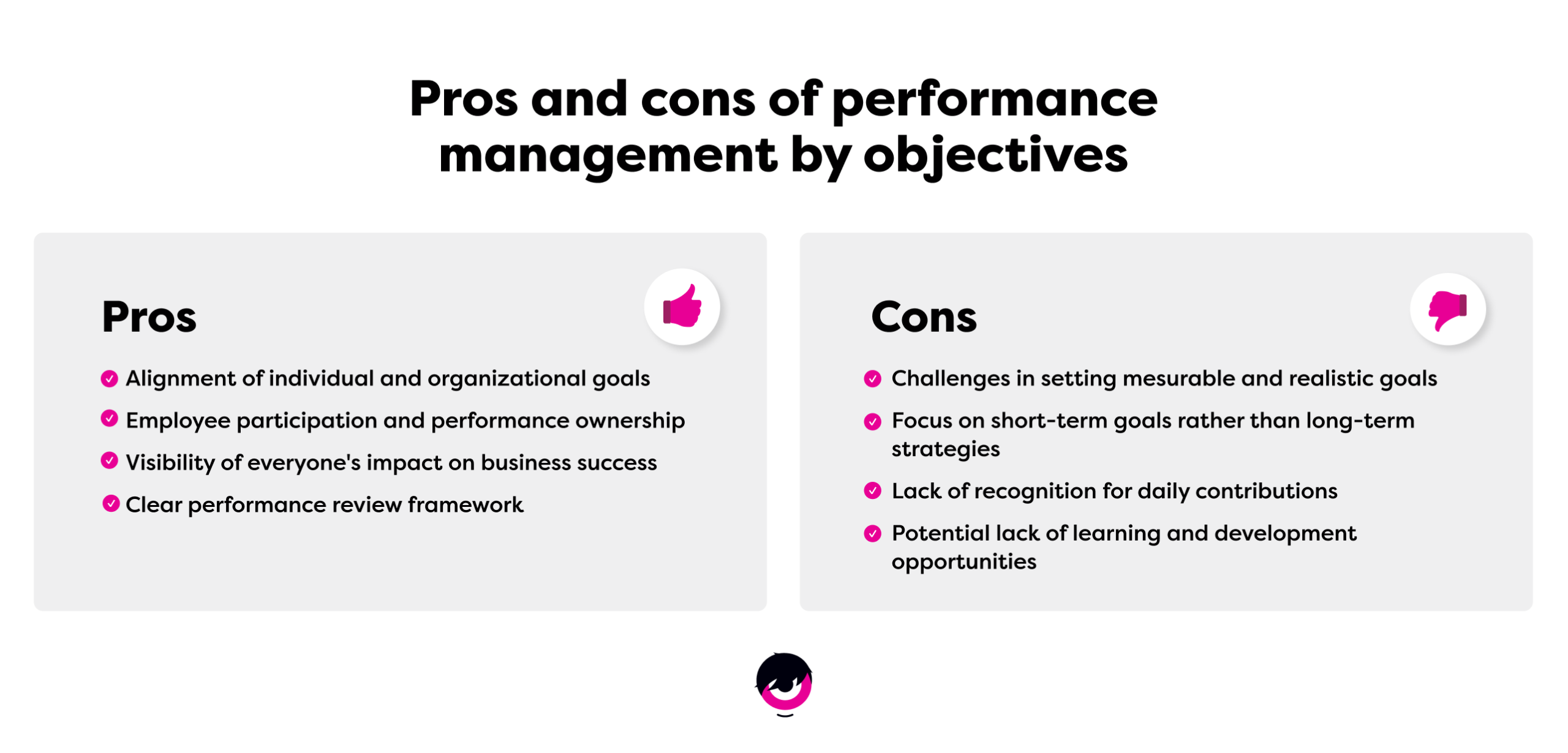
This method is interesting for companies that work by project completion – consulting and professional services, for instance. A relationship of trust and providing autonomy to employees is crucial, so the evaluated team dynamic matters here.
Employees evaluate their own performance based on predefined criteria or goals to further encourage their personal commitment to their performance and growth.
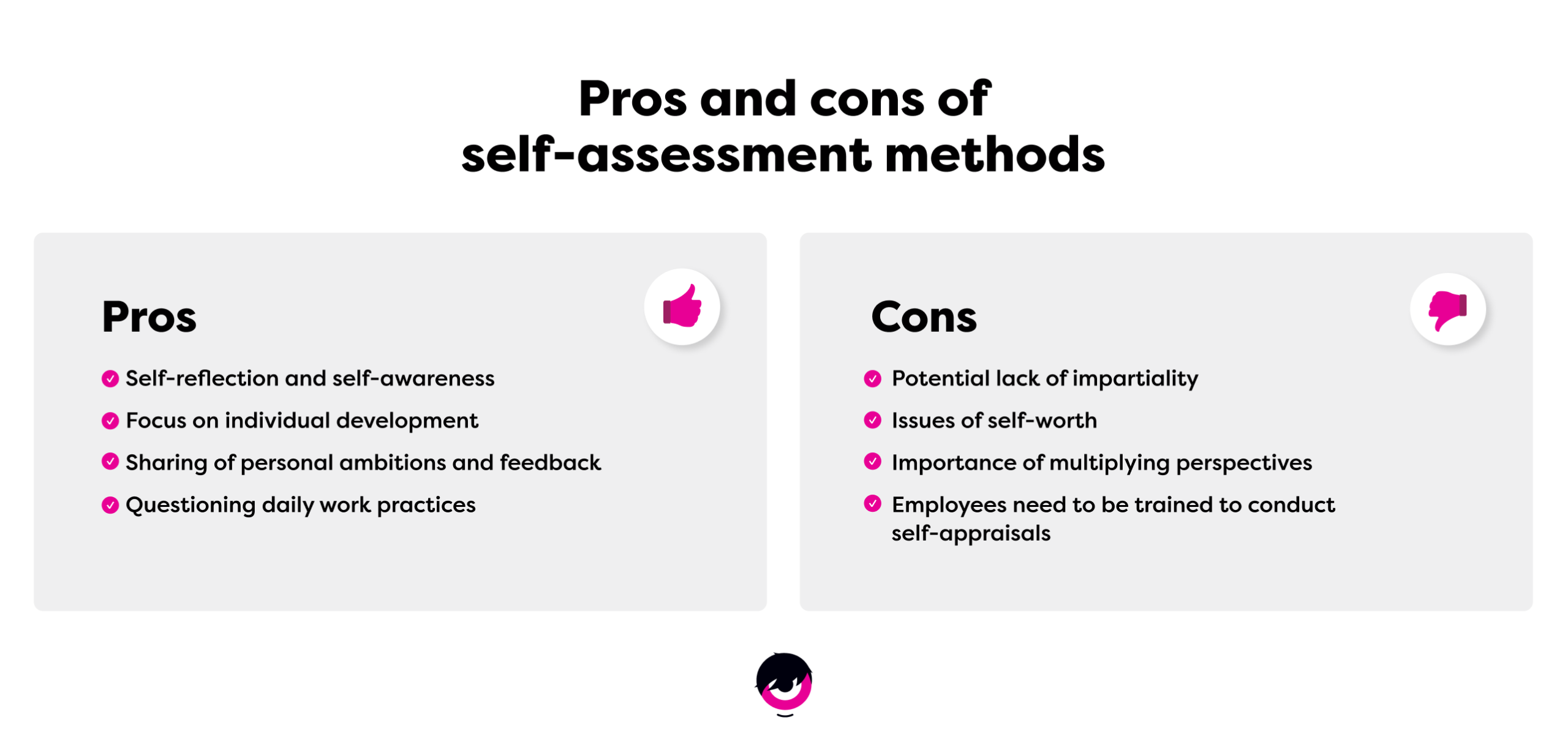
Industries which typically focus on qualitative criteria such as behavior and people skills can greatly benefit from using this appraisal method. This is the case of service industries, for example.
Of course, other appraisal methods exist, such as the 9-box grid appraisal and many others. However, with the previous examples we introduced, you will get a strong idea of which performance appraisal process will be the most efficient for your reality.
Some of these methods’ limitations can be addressed by implementing a healthy feedback culture consisting of regular check-ins, ongoing performance management, and effective performance management software tools. Indeed, regular and actionable feedback optimizes employee performance management and fosters productivity and development.
Here are some sample questions covering the essential points you need to address during a performance appraisal, sorted by evaluation method:
1) What technical skills have you acquired or developed this year?
2) How have these skills supported your day-to-day performance?
3) How would you describe your general attitude at work?
4) How do you react to feedback, whether positive or negative?
5) Can you share an example of how you have used feedback to improve your work?
6) How do you ensure that your actions are aligned with the company’s culture and objectives?
7) What are your strengths and weaknesses, and how would you assess them?
8) Are you satisfied with your performance over the last period? Are there any tasks or projects you would have completed differently?
9) What are your plans for future professional development?
10) What skills have you acquired recently and which ones would like to acquire in the future?
11) What individual goals would you like to set for the next period?
12) What have been your favorite projects to work on? Were there any projects you didn’t like as much?
13) What could we do to improve your daily work?
14) What objectives have you achieved during this evaluation period?
15) Could you describe the results achieved in relation to the objectives we set?
16) What challenges did you encounter in achieving your objectives?
17) How did you overcome these obstacles?
18) What objectives would you like to work on for the next period, and how do you think you can achieve them?
19) Do you feel that your objectives and your work have a direct impact team and organizational performance?
20) Do you think the goals you set were realistic? Were there too ambitious, or not ambitious enough?
21) How would you rate your collaboration with team members?
22) Did you receive feedback from your colleagues? Has it been helpful?
23) How do you support and coach your employees on a daily basis?
24) What comments have your employees shared about your leadership skills?
25) Do you have a healthy relationship with your direct supervisor? Do you find their feedback relevant?
Once you’ve asked your questions during the performance interview, you can write up your assessment. Here are some sample results to help you in your writing and summarizing process:
“This employee has met all the criteria detailed in our assessment scale. Their positive attitude and their concern to meet all the individual objectives defined during the previous appraisal make all the difference to team and company success. I wish to underline their good understanding with team members and their ability to collaborate effectively with colleagues. I also noticed leadership skills that we could develop and that could lead to a promotion in the future. Therefore, I have added this element to the performance objectives for the next appraisal.”
“After experiencing a dip in performance over the last period, this employee challenged themselves and progressed in every respect. In addition to improving their performance level, they took my feedback into account to implement better practices on a daily basis. These changes have turned the situation around and optimized the employee’s potential. For the next quarterly appraisal, I’d like this employee to focus on maintaining a stable level of productivity while learning to use tools that will help them continuously improve.”
“Despite our previous exchanges, this employee has not considered the constructive feedback shared and has not implemented good work practices. What’s more, their negative attitude is impacting the workplace and the well-being of team members. I have therefore put performance improvement measures in place and communicated the importance of solving these issues as quickly as possible. A further assessment will be organized next month to quickly analyze the situation and make the appropriate follow-up decisions.”
Whatever the method you choose, a successful appraisal must focus on finding solutions to improve employee productivity and motivation, as well as promoting skills development. Good performance management is an integral part of effective human resources management practices, and directly supports your strategic objectives and the success of your organization.
Folks performance management tools let you customize your entire process!

BOOK YOUR FREE DEMO

Here are current recruitment challenges and key trends you need to keep in mind to implement an effective HR marketing strategy.

In this article, we present the benefits and different types of HR solutions, as well as best practices for choosing HR software that matches your company’s needs and reality.

Effective absence management processes can reduce the negative impact of absences on productivity. Here are tips, tools and strategies you should implement.